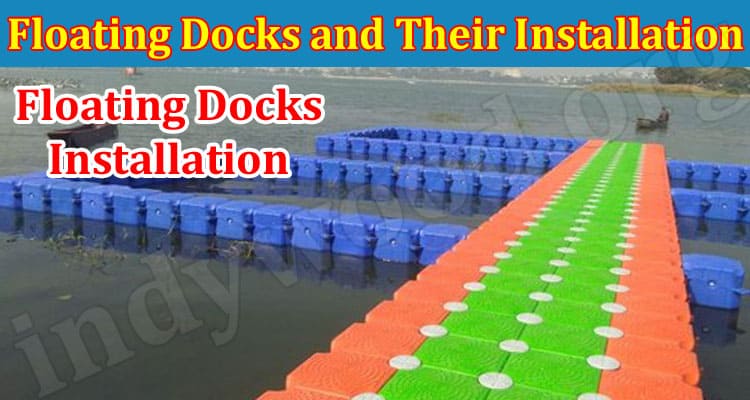Floating Docks and Their Installation: Floating docks can be seen anywhere along coastlines or ponds in the country. Floating docks are called pontoons in many places, and they are simply the same thing. In particular, if we talk about pontoons, they comply with a lot of things together, so in a pontoon comes a floating dock, a gangway, and a mooring option. It is the best way for people who want to enjoy the area near their waterfront homes.
Floating Docks are a modern solution that is much more convenient and reliable for living life at its fullest near the waterfront.
Let’s see how a floating dock works.
The floating dock systems offered by most companies work by joining three distinctive parts together. These are; the mooring options, the dock, and the gangway. These parts have important functions that combine work and make a platform strong enough to handle a lot of loads of their capacity. The gangway is something that connects the dock to the land, and mooring options are a kind of cable that keeps things in place.
What Is The Weight-Holding Capacity Of A Floating Dock?
To answer this question, we will talk about a floating dock that is large enough to provide good buoyancy on the water. Sometimes we cannot accurately know the answer because it depends upon the size and mooring option of the dock. Also, due to the different quality of plastic floating docks, there can be differences in the buoyancy force exerted by them. So this needs complex calculation, which is a part of engineering to provide answers with more accuracy.
This means that while developing a floating dock at your waterfront, you will require an onsite engineer that can handle the calculation part.
How to Hook Up A Floating Dock?
There are 3 types of connecting modes for floating docks: crossover cables, piles, and strut arms. By them, the floating docks are hooked up well to develop a strong interconnection.
The gangway is needed to make a connection between land and the dock. And after that strut, cables are the ones that combine with the mooring option and provide a connection for other components, to make it a strong chain of floating docks.
What Is The Use Of A Floating Dock?
The majority of the time, the floating dock is used as a platform to simply enjoy the waterfront along coastlines. But there are many other varieties of usage where floating docks play a major part.
Many property owners also try to make their property more valuable by developing a view of the waterfront with a floating dock; they merely use it for fishing and boating. But still, they cover a large percentage of floating dock buyers.
Floating docks are best for people that want to go boating in front of their homes. They can also ramp their boat nearby without the headache of parking their water vehicles. Some floating docks are specially made for parking purposes, like Jet Ski parking docks.
How to stabilize the floating dock?
The floating docks are supported by mooring blocks to the shore, and these are the ones that provide the stability for the platform. In particular, this doesn’t work with every kind of floating dock; this is the case for only pontoon floating docks because only these types of floating docks are connected via stainless steel cables or aluminum strum arms. This is why they are self-stabilized on their own.
Why Are Floating Docks Better Than Piled Docks?
Piling docks need to be installed on every block of the dock and then with anchor cable, they are tied together to make a platform. But this can be a headache if you don’t have a good understanding and experience of how to work professionally. Floating docks are always very easy to install but need to be assembled with some precautions by an understanding of the facts. Taking care of things with precision will make the best floating dock.
How Are Floating Docks Built?
Floating docks are built upside down. You will have to measure the area for which you want to make a platform. After that, just allot the number of floating dock building components required and assemble them upside down. Make sure things are strong because this is the part that will stay under the water most of the time. It will be a proper safety to the overall structure.
Things You Need To Keep As Safety Equipment.
When a floating dock get punctured you need to make it repair instantly, there are some helpful tools which can help you in the process;
Always keep globe valves for flow control; it is a very good type of tool, helpful many times to flush water out. The next thing you should have in your home is molecular sieve beads. These beads help to absorb the moisture and remove water totally from any place.






